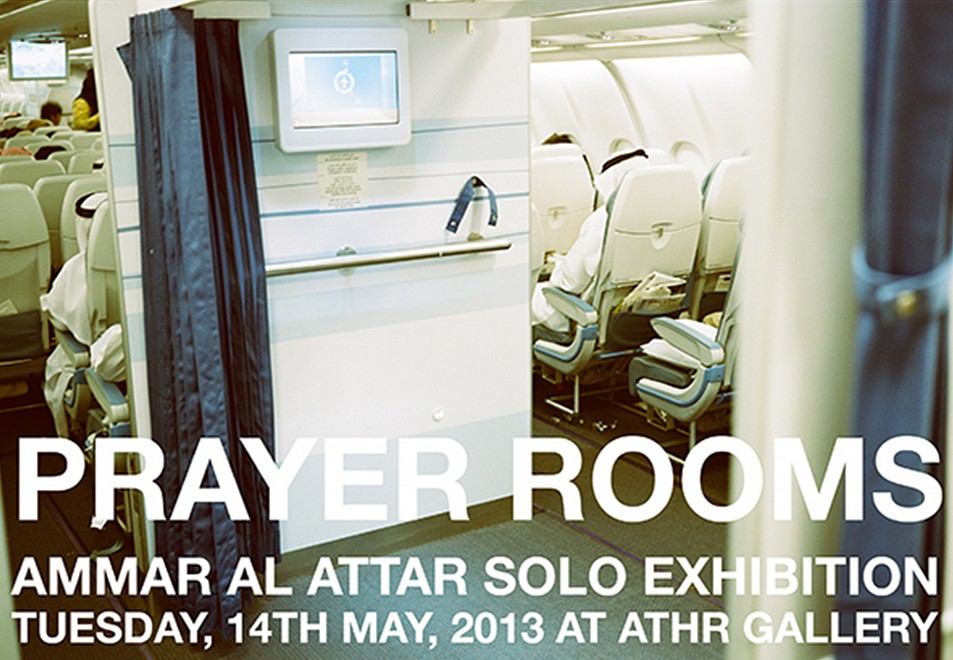Ammar Al Attar surveys prayer rooms across Jeddah. Mandated in public buildings by national legislation, these informal worship areas are ubiquitous, providing the faithful a place for their five prayers a day regardless of their location.
The viewer experiences the artist’s perspective of these rooms as they are. Nothing is altered or staged, not even the lighting. The authenticity of the depictions allows the series to collectively describe an engagement with a space. This uncontrived honesty towards a subject is characteristic of Al Attar’s oeuvre.
The interiors are often humble, in line with Islamic tenets and in contrast to the region’s exterior architectural opulence. Serenity and stillness are prevalent in these makeshift rooms, elevating their spatial reality as industrial caravans or rooms in malls and business centers, to that of egalitarian spiritual sanctuaries. The prayer rooms mark the passage of time directly through the ever-present, often multiple occurrence of clocks, and more imperceptibly through the awareness of the movement of the sun.
Rituals that take place before entering the rooms are inferred – ablutions and perhaps even a call to prayer. One cannot help but wonder about the individuals in these very different spaces, performing the same rites. This sense of order and togetherness offers a reprieve from the bustling chaos of urban development. Even the demarcated rows in the carpeting are a comfort.
Al Attar chronicles his surroundings and contemporary landscape, going beyond mere documentation, and engaging with issues impacting the social fabric. These empty constructs where people meet are widely scattered evidence of faith, embodying the crossover between public and private space. The locales appear obscure, but upon closer inspection provide a visual history of the artist’s rapidly developing country by presenting a cultural continuity which is rarely visible amidst overwhelming change.




